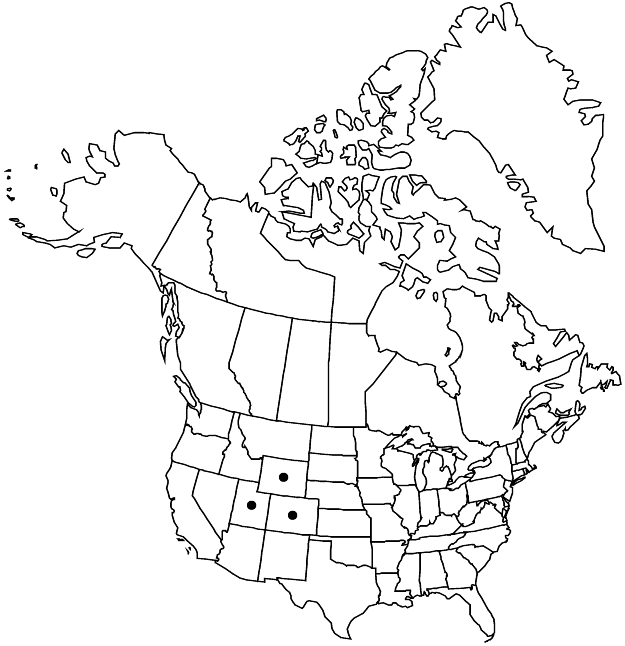Silene kingii
Candollea 22: 29. 1967.
Plants perennial, cespitose, compact; taproot thick; caudex much-branched, fleshy. Stems erect, simple proximal to inflorescence, 7–20 cm, with 2–4 pairs of leaves, short retrorse-pubescent proximally, stipitate-glandular and viscid distally, with purple-septate hairs. Leaves: basal pseudopetiolate, tufted, blade narrowly oblanceolate, 1.5–5 cm × 1.5–5 mm, base narrowed into long pseudopetiole, retrorse-puberulent on both surfaces; cauline sessile, connate at base, blade linear to linear-lanceolate or linear-oblanceolate, 1–4 cm × 1.5–4 mm, apex acute. Inflorescences 1 (–3) -flowered. Pedicels erect, rarely somewhat curved or reflexed near tip, 0.5–2 cm, 1/2–3 times calyx, viscid with stipitate-glandular and purple-septate hairs, hairs less than 1/2 pedicel diam. Flowers 10–12 mm diam.; calyx prominently 10-veined, ellipsoid, somewhat inflated and contracted at mouth to 1/2–2/3 diam., 12–14 × 6–7 mm in flower, 14–17 × 7–8 mm in fruit, to 2 times as long as broad, papery, margins dentate, lobes 5, patent, ca. 2 mm, with broad, membranous margins, apex obtuse, pubescent, hairs short and stipitate-glandular and long purple-septate; corolla pink to purple, slightly longer than calyx, limb 2-lobed, 4–5 mm, with 2 short (ca. 0.5 mm) appendages; stamens equaling corolla; stigmas (4–) 5, equaling corolla. Capsules equaling calyx, opening by 5 recurved teeth, which later split into 10; carpophore very short or absent. Seeds dark-brown, reniform, not winged, 0.7–1 mm, papillate-tuberculate.
Phenology: Flowering summer.
Habitat: Alpine slopes, tundra, stony ridges
Elevation: 3000-4000 m
Distribution

Colo., Utah, Wyo.
Discussion
Of conservation concern.
Silene kingii is very similar to and probably a close relative of S. uralensis subsp. uralensis, from which it is distinguished by its nonwinged seeds and elliptic fruiting calyx. However, some material from the southern Rocky Mountains, growing with subsp. uralensis, is intermediate between the two species in having narrowly winged seeds. The status of S. kingii requires further study.
Selected References
None.